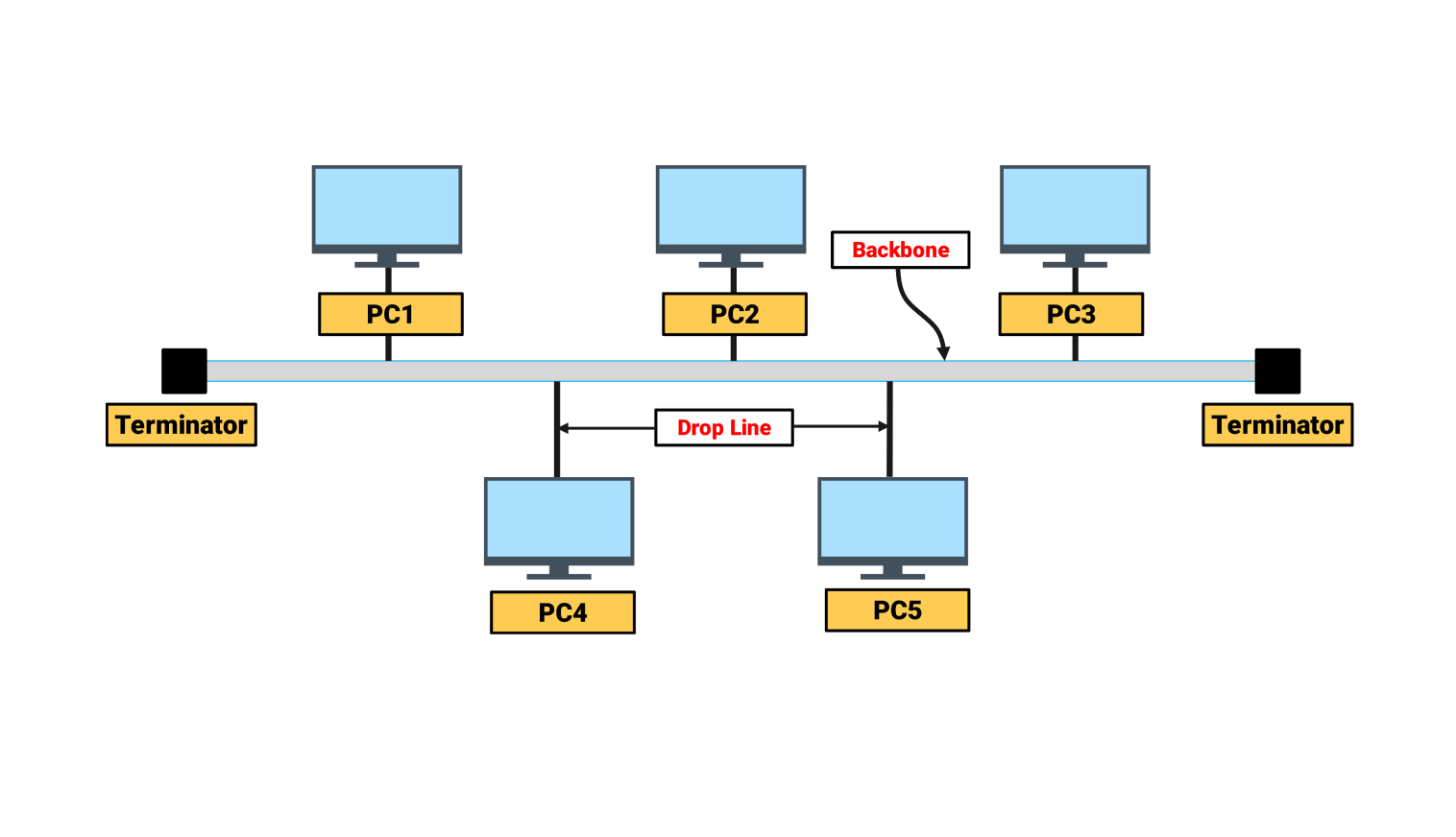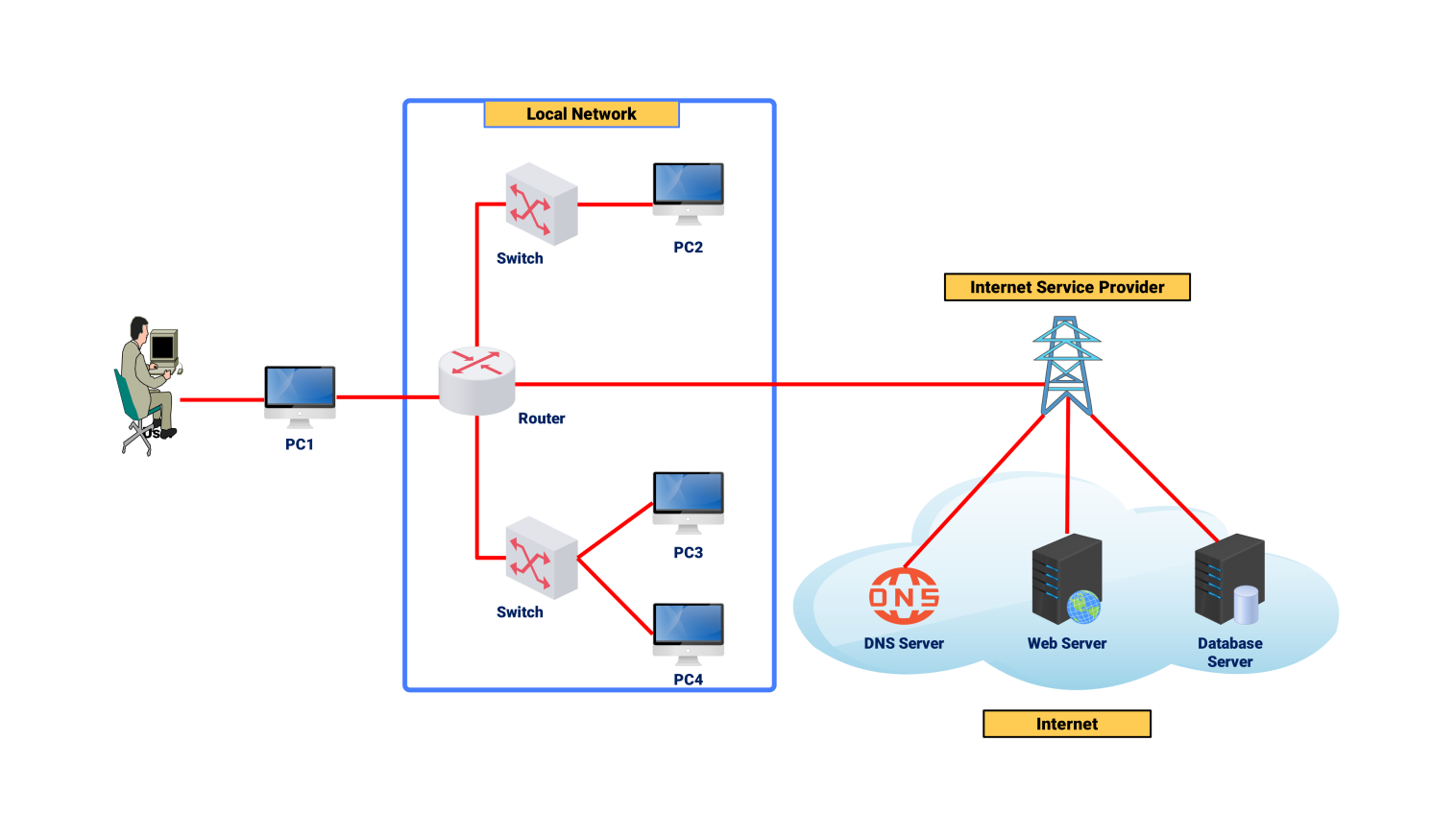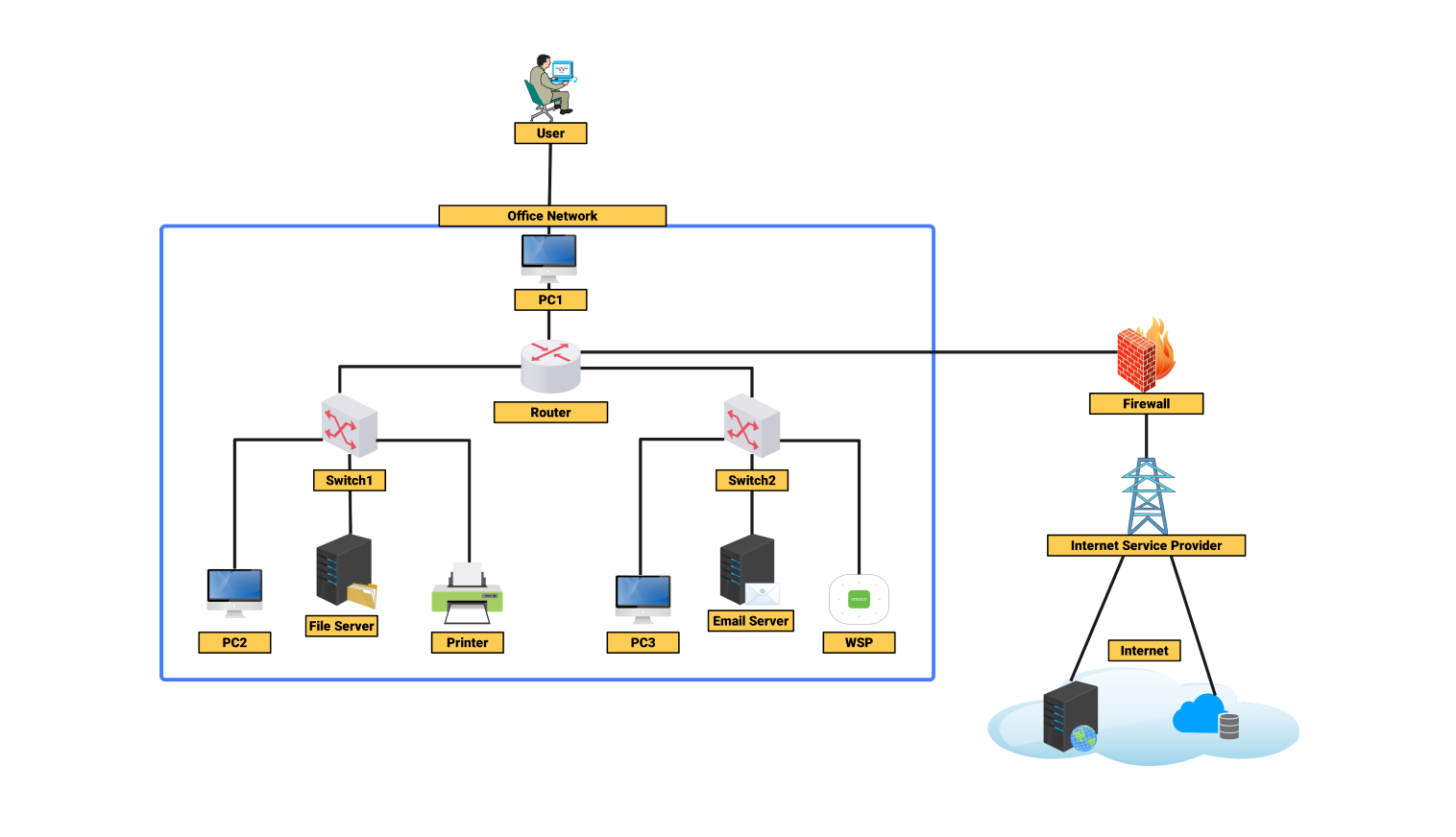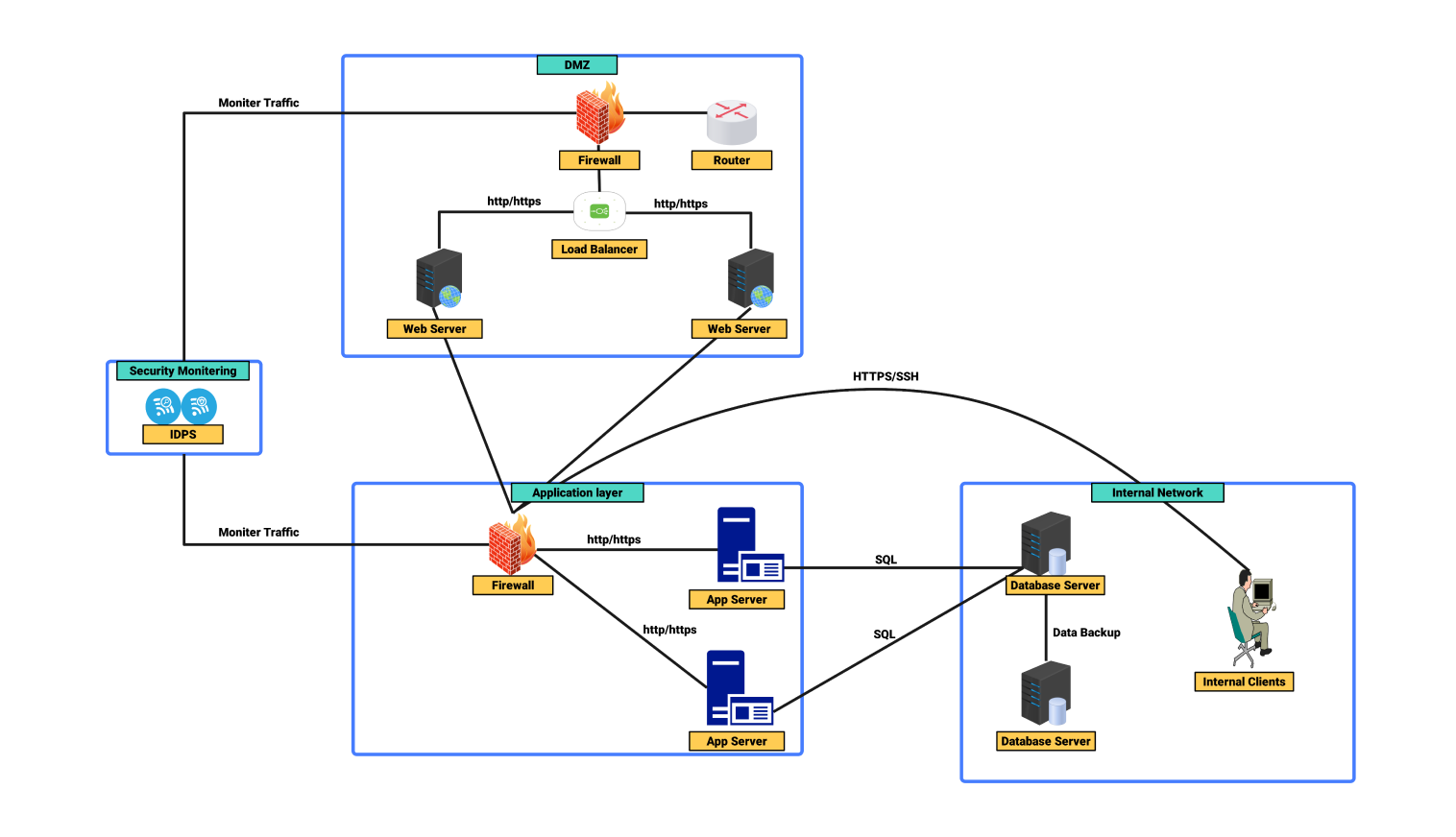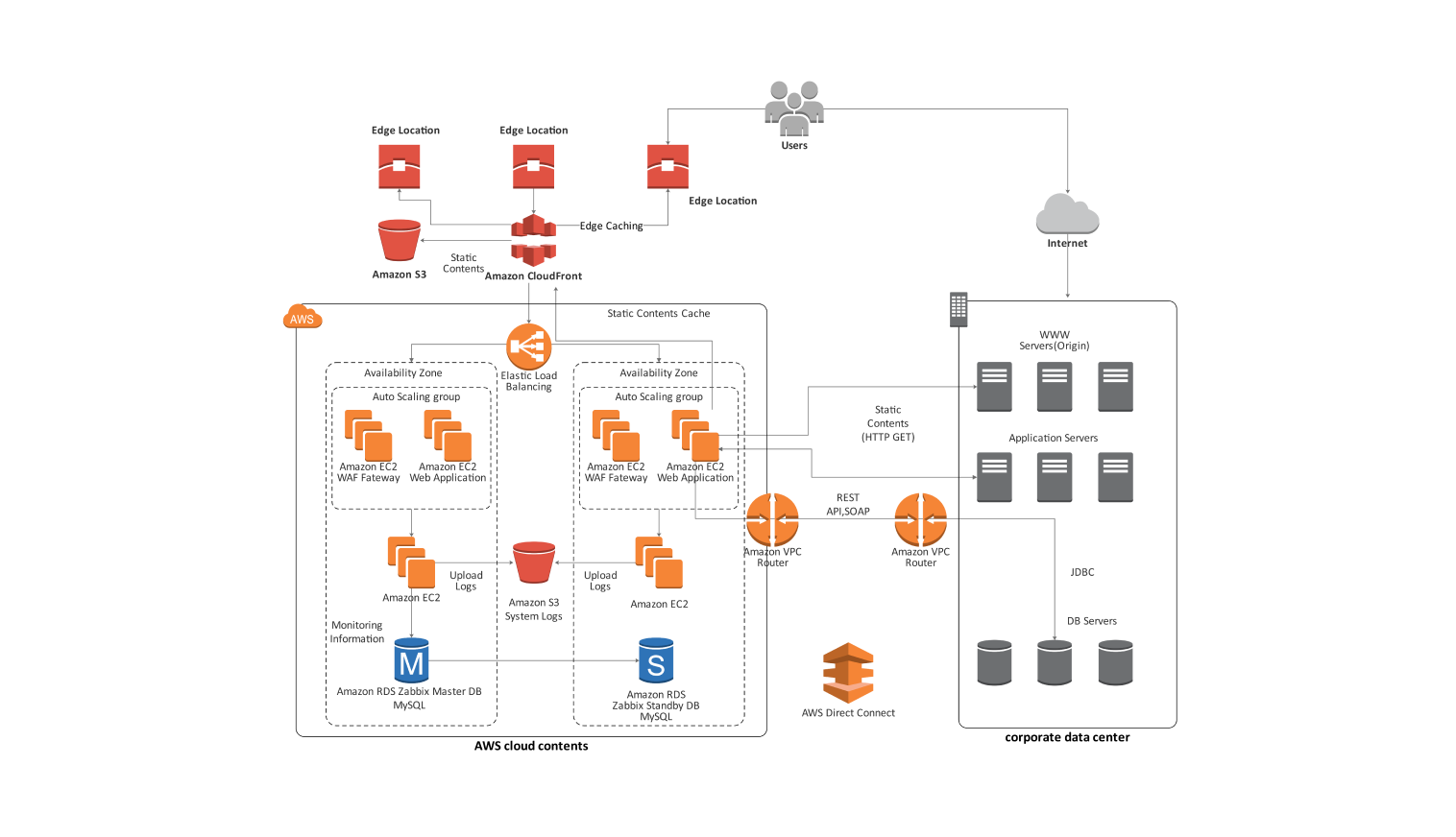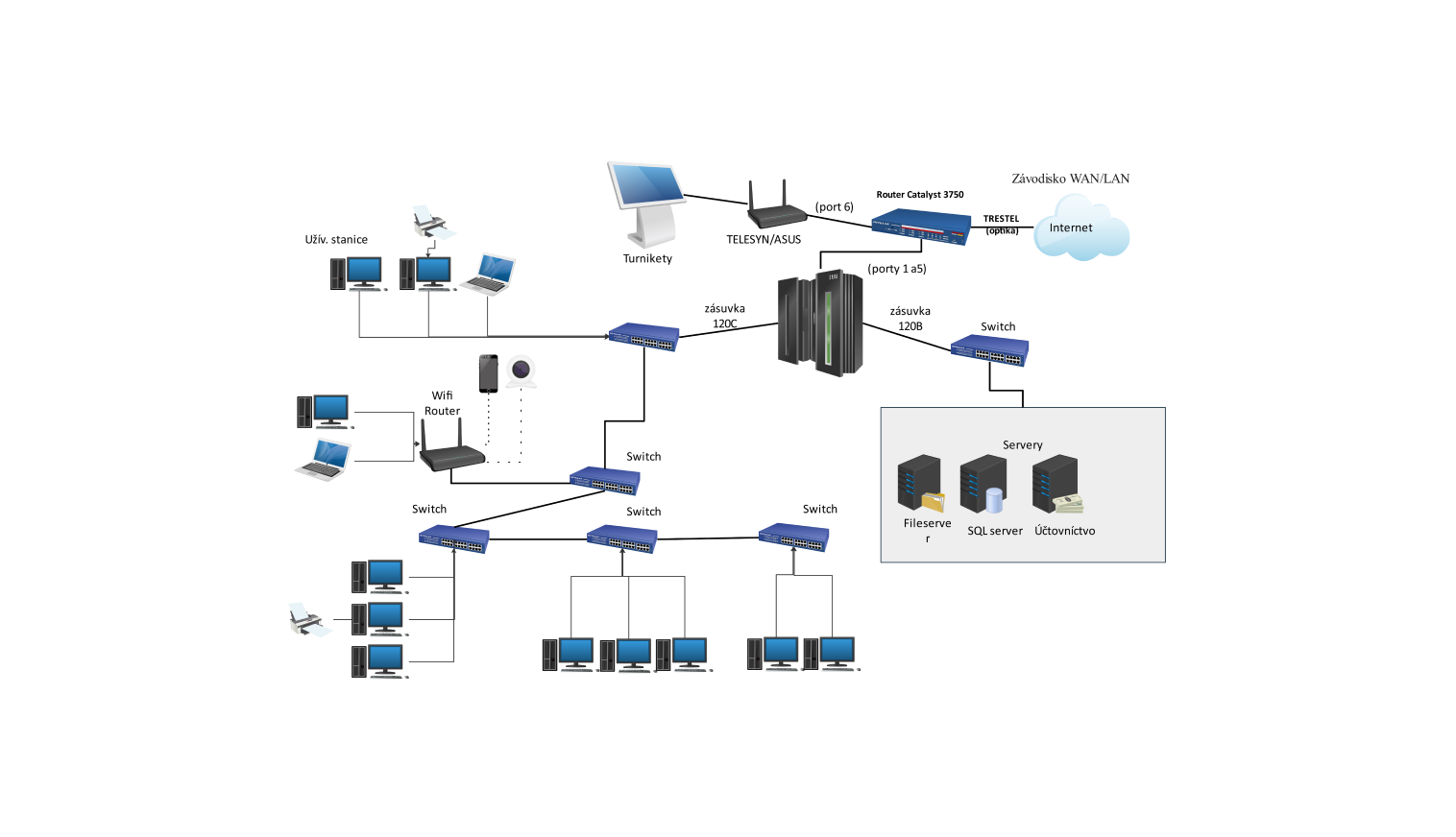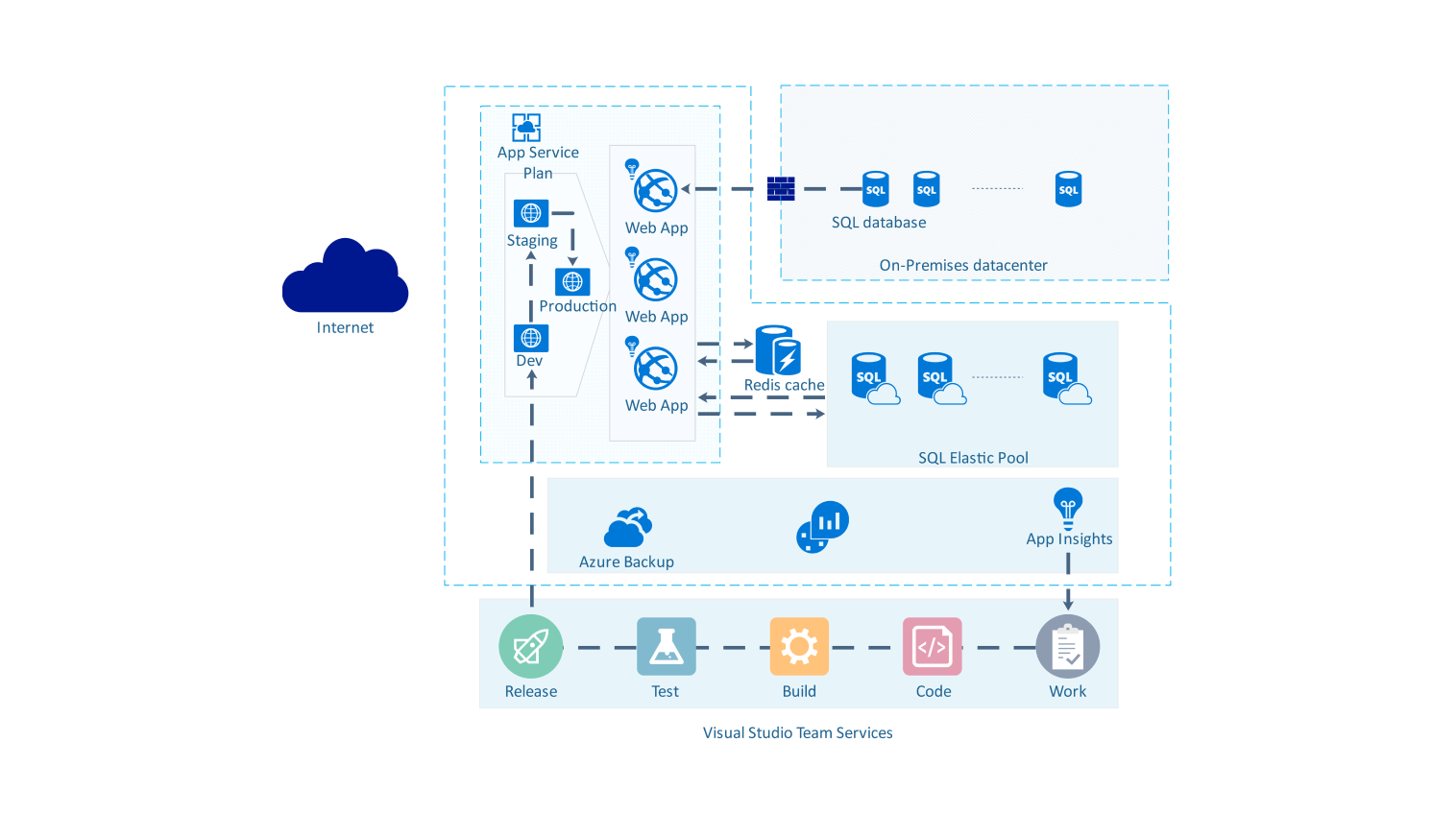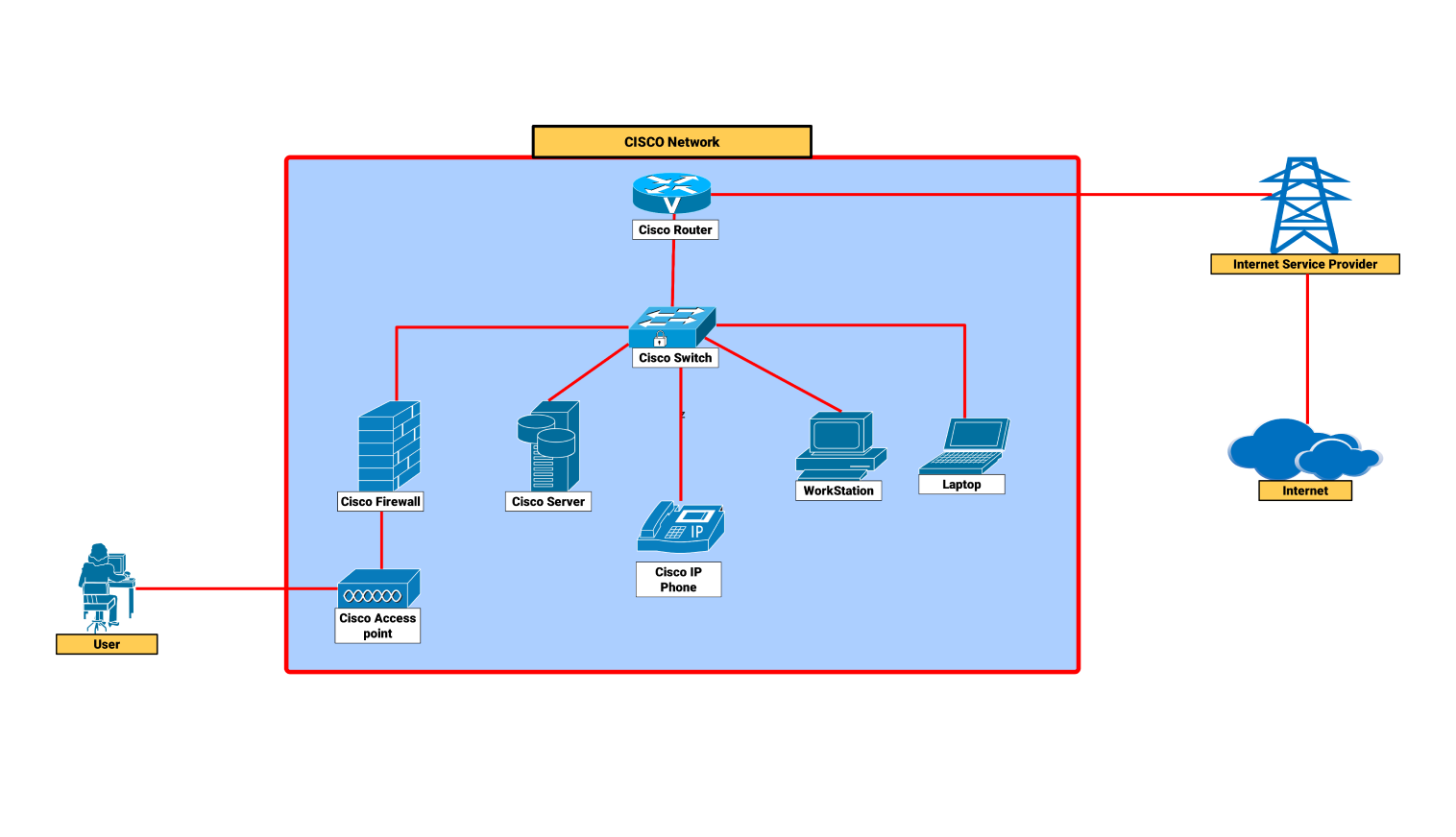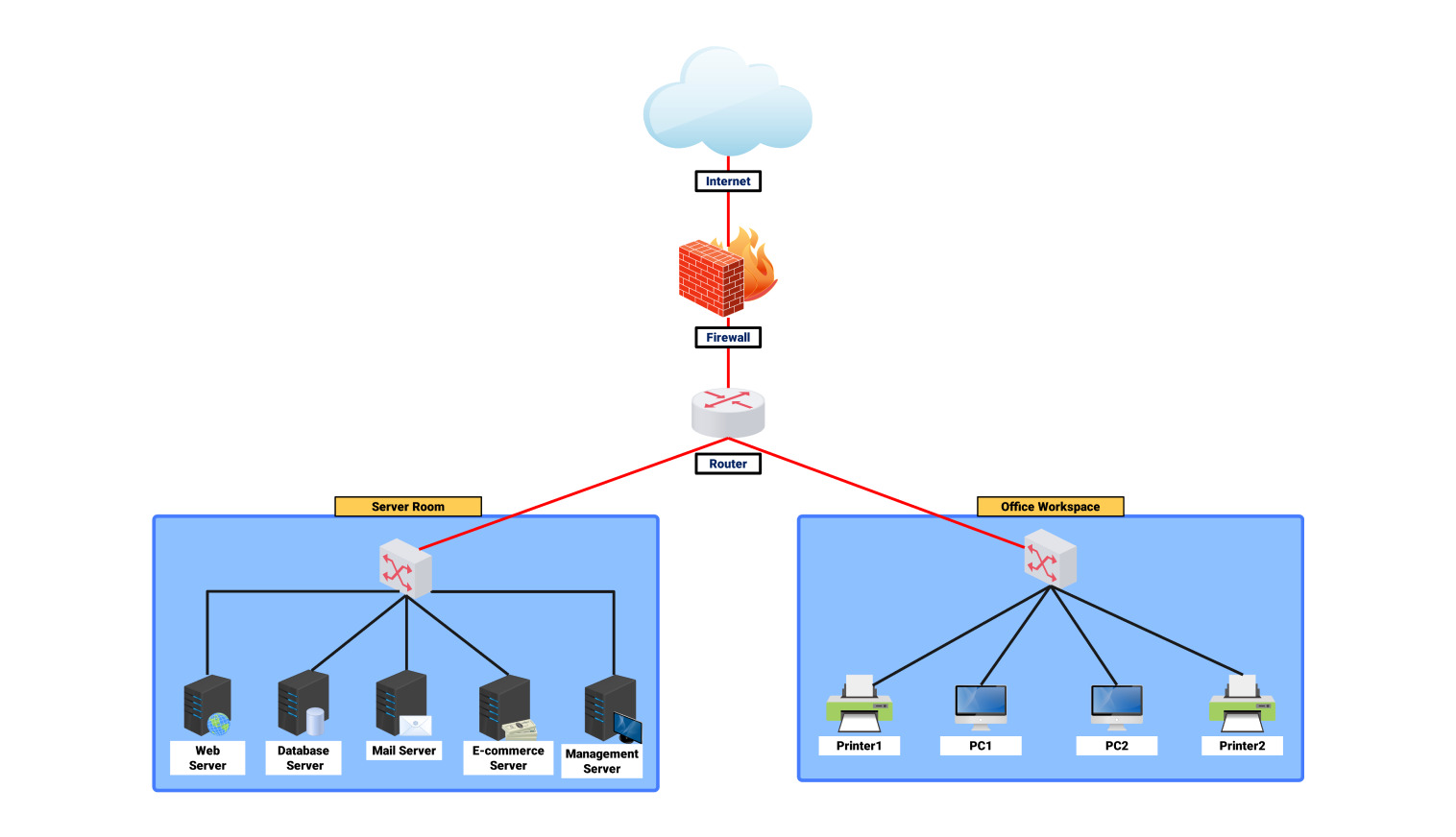- All templates
- Network diagram templates
- Network diagram bus topology
About this bus topology network diagram
Following is a bus topology network diagram in which the basic structure and components of a typical bus network are visualized. This method is based on a communication framework called linear. It connects several devices to a central cable, called the backbone or bus.
This central cable or the bus is the shared communication medium over which all data transmissions take place.
Several important elements can be seen in the bus topology above. The backbone is the main communication channel represented by a central horizontal line. Pc 2, pc 3, and pc 4 stand for the additional devices connected to this backbone.
A drop line connects each device with the backbone, which is a short cable that links the terminal from the main bus. With this configuration, signal communication circulates through the backbone, allowing every single device to transmit or receive data via the network.
There are terminators at the far ends of the backbone. They are called terminators because they terminate signals that travel to the end of the bus, preventing them from reflecting and causing interference.
Without them, the network might suffer from signal loss. This can cause communication faults and lower throughput.
Bus topologies work well in static networks that won't change much. It allows easy expansion by adding devices. A new computer needs only one drop-lined run back and connected to the backbone. A major downside is that all devices share the same setting.
So, more users connecting to the network can slow performance. It also means that troubleshooting network problems is harder. The whole system is based on one backbone cable. It can be easily disrupted, creating a single point of failure.
This diagram shows the simplicity of a bus topology. All devices are directly connected to one communication channel. This makes it cost-effective and useful for small networks. The diagram lists the limitations of bus topology. If the backbone fails, there is no communication. Also, too many devices can cause data collisions.
Security can weaken since data sent across the backbone is available to every device. This raises privacy concerns in larger, complex networks.
Related templates
Get started with EdrawMax today
Create 210 types of diagrams online for free.
Draw a diagram free Draw a diagram free Draw a diagram free Draw a diagram free Draw a diagram free